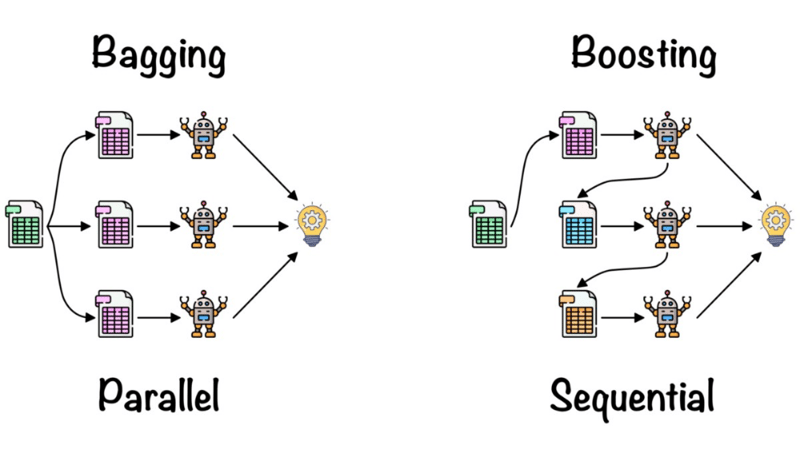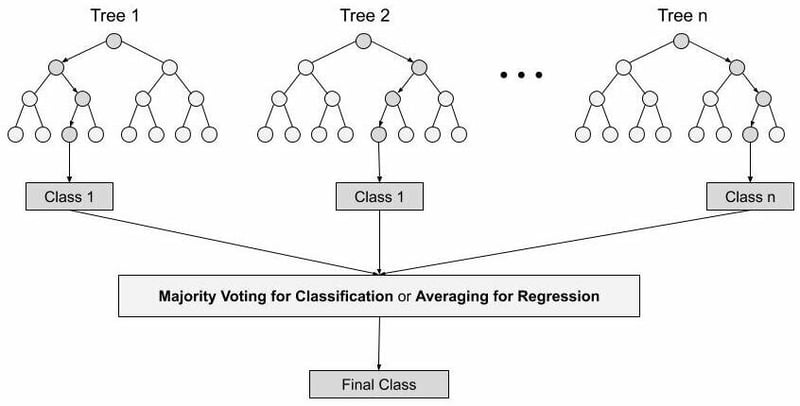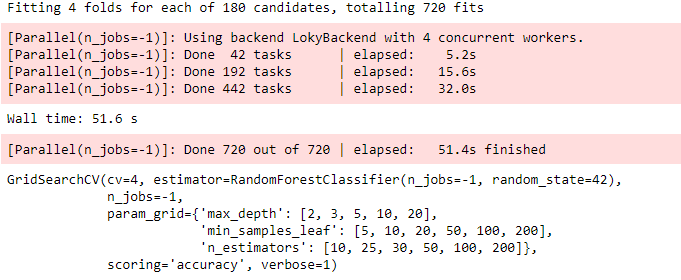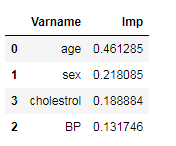Running Random Forest

Kamya123
Posted on November 6, 2022
Introduction:
Random Forest is a Supervised Machine Learning Algorithm that is used widely in Classification and Regression problems. It builds decision trees on different samples and takes their majority vote for classification and average in case of regression.
One of the most important features of the Random Forest Algorithm is that it can handle the data set containing continuous variables as in the case of regression and categorical variables as in the case of classification. It performs better results for classification problems.
Real Life Analogy:
Working of Random Forest Algorithm:
We need to know the Ensemble technique. Ensemble uses two types of methods:
1. Bagging - It creates a different training subset from the sample training data with a replacement & the final output is based on majority voting. For example, Random Forest.
2. Boosting - It combines weak learners into strong learners by creating sequential models such that the final model has the highest accuracy. For example, ADA BOOS, XG BOOST.
Steps involved in Random Forest:
Step 1: In Random Forest n number of random records is taken from the data set having k number of records.
Step 2: Individual decision trees are constructed for each sample.
Step 3: Each decision tree will generate an output.
Step 4: Final Output is considered based on the Majority Voting for Classification and regression respectively.
Coding in Python:
1. Let's Import the Libraries:
import pandas as pd
import numpy as np
import matplotlib.pyplot as plt
import seaborn as sns
2. Importing data set:
df = pd.read_csv('heart_v2.csv')
print(df.head())
sns.countplot(df['heart disease'])
plt.title('Value counts of heart disease patients')
plt.show()
3. Putting Feature Variable to X and Target Variable to Y:
X = df.drop('heart disease',axis=1)
y = df['heart disease']
4. Train Test Split is Performed:
from sklearn.model_selection import train_test_split
X_train, X_test, y_train, y_test = train_test_split(X, y, train_size=0.7, random_state=42)
X_train.shape, X_test.shape
3. Import RandomForestClassifier and fit the data:
from sklearn.ensemble import RandomForestClassifier
classifier_rf = RandomForestClassifier(random_state=42, n_jobs=-1, max_depth=5, n_estimators=100, oob_score=True)
%%time
classifier_rf.fit(X_train, y_train)
classifier_rf.oob_score_
4. Hyperparameter tuning for Random Forest using GridSearchCV and fit the data:
rf = RandomForestClassifier(random_state=42, n_jobs=-1)
params = {
'max_depth': [2,3,5,10,20],
'min_samples_leaf': [5,10,20,50,100,200],
'n_estimators': [10,25,30,50,100,200]
}
from sklearn.model_selection import GridSearchCV
grid_search = GridSearchCV(estimator=rf, param_grid=params, cv = 4, n_jobs=-1, verbose=1, scoring="accuracy")
%%time
grid_search.fit(X_train, y_train)
grid_search.best_score_
rf_best = grid_search.best_estimator_
rf_best
5. Visualization:
from sklearn.tree import plot_tree
plt.figure(figsize=(80,40))
plot_tree(rf_best.estimators_[5], feature_names = X.columns,class_names=['Disease', "No Disease"],filled=True);
from sklearn.tree import plot_tree
plt.figure(figsize=(80,40))
plot_tree(rf_best.estimators_[7], feature_names = X.columns,class_names=['Disease', "No Disease"],filled=True);
6. Sorting of Data according to feature importance:
rf_best.feature_importances_
imp_df = pd.DataFrame({
"Varname": X_train.columns,
"Imp": rf_best.feature_importances_
})
imp_df.sort_values(by="Imp", ascending=False)
Summary:
Now, we can conclude that Random Forest is one of the best techniques with high performance which is widely used in various industries for its efficiency. It can handle binary, continuous, and categorical data.
Random Forest is a great choice if anyone wants to build the model fast and efficiently as one of the best things about the random forest is it can handle missing values too.
Overall, Random Forest is fast, simple, flexible and robust model with some limitations.

Posted on November 6, 2022
Join Our Newsletter. No Spam, Only the good stuff.
Sign up to receive the latest update from our blog.










